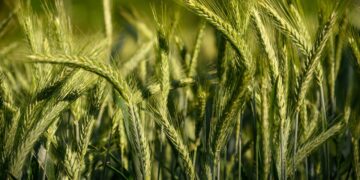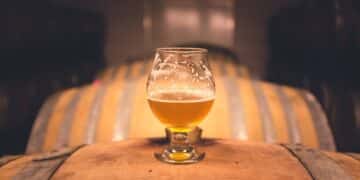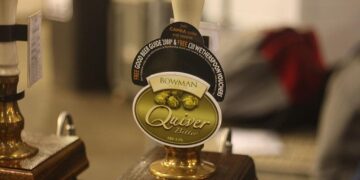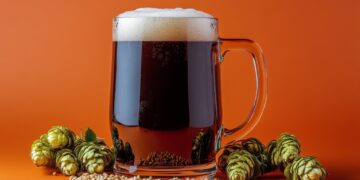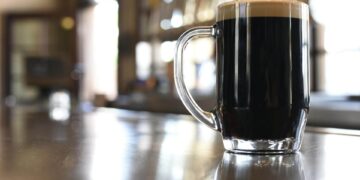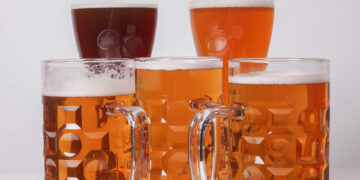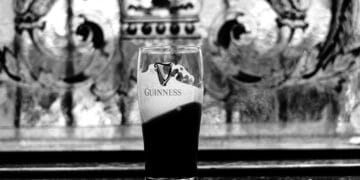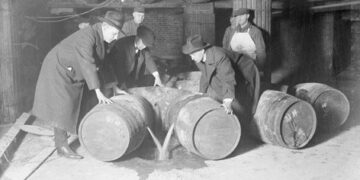Beer, far from being just a drink to ‘neck’ along with a few mates on a weekend, is extremely versatile and lends itself to enjoyment on a variety of occasions. Notably, there are a number of ‘seasonal’ beers that are best enjoyed at the appropriate time of year, as an ideal accompaniment to the weather mood and fare of the season. Why not try a specific in-season beer next time you go out, or entertain guests. It is, at the least, a welcome opportunity to try a few new beer-types!
Spring Beers
The most famous spring-time beers hail from (like a lot of beer-related concepts) Bavaria, Germany. Most well known of the Bavarian Spring beers is the Paulaner ‘Salvator’ Double Bock Bier (7.5%: Double Bock translates, roughly, as very strong). The Paulaner Brewery has a rich history, and was founded by Saint Francis of Paula in the early 17th Century. The name ‘Salvator’ hails back to the time when the Paulaner brewery was run by monks, and means ‘Saviour’. A wide variety Bock (strong) and Double Bock beers are brewed across Europe for the spring: these are often referred to as Mai-Bock’s (May-Beers), or in Holland ‘Lente Bok’ (Lent beers, again alluding to early Christian origins).
Summer Beers
Summer is for many the ideal time for a light bitter or cool lager. Both the Belgians and the British have, over the years, developed varieties of, respectively, Wheat Beers and Light Ales to suit the hot weather and lighter lunches that characterise the summer season. Light Ales brewed in Britain tend to be around 4-5% in strength, and with a light golden taste, are perfect the perfect accompaniment to a summer salad, or an afternoon in a pub beer garden. Belgian summer beers, often prefixed with the word ‘Saison’ (in English, ‘season’) are often stronger in taste, being sharp and wheaty, and in strength – coming in at about 6-7%, these beers are best sipped slowly, chilled.
Autumn Beers
Needless to say, Autumn beers are often dominated by the Bavarians – Bavaria being the home of the famous ‘Oktoberfest’ (or ‘October Beer Festival’ see related article: Beer Festivals.) It is believed that Lager was initially invented in Bavaria, as a result of the long brewing process that ensured their was beer available in the non-brewing season (which ended every year in March, and began again in October). Every year the last of the march beer was stored in Caves for consumption at the end the long Summer. By October, when the new season began, the last remaining stock had matured full, and was drunk in celebration at the October festivals. For this reason a traditional autumn beer is a strong lager (5-6%). However, in recent years English brewers have begun to brew ‘Autumn Ales’, characterised by deep red colours and a medium strength, such as the warm and rich Shepherd’s Neame’s ‘Late Red’. Neither quite as ‘warm’ or as strong as ‘Christmas Ales’, these beers make a good preliminary taster. Also try Halloween seasonals such as Wychwood’s ‘Black Wych’.
Winter and Christmas Ales
Winter Ales are the best known of the seasonal beers, and have the longest tradition. Strong beers brewed for the winter season have spurred Nordic people through wind and snow for centuries. Where the weather is warmer, a new variety of beers often comes in for the winter season, as new hop varieties are harvested. Gordon Xmas, from Scotland (8%), Samichlaus Bier, from Switzerland (14%), and Bush de Noel (12%) from Belgium are all beers brewed in the manner traditional to their region, but with added strength for the Christmas season. The added strength both warms, and aids the celebratory mood.
Strong porters and stouts are also ideal for drinking in the winter. Russian Imperial Stouts (see related article: Stout) are exceptionally strong, which seems to be a prerequisite of a winter beer: if you can’t get warmer, you can, at least, forget how cold you are! Brewed for export to the cold Russian climate, these beers have a strong blend of flavours ideally suited to the winter chill. With Carlsberg marketing a Christmas Lager this year, you can be sure that their will be a seasonal beer for everyone!
Whatever the season, there are beers brewed to suit. This trend has been spurred by the existing variety of winter and October beers available. The steady growth of craft and micro breweries has then led to greater experimentation within brewing. The change of seasons, celebrated since the dawn of time with ritual activity, can now be saluted with a well produced real ale or two: raise a glass to that!



